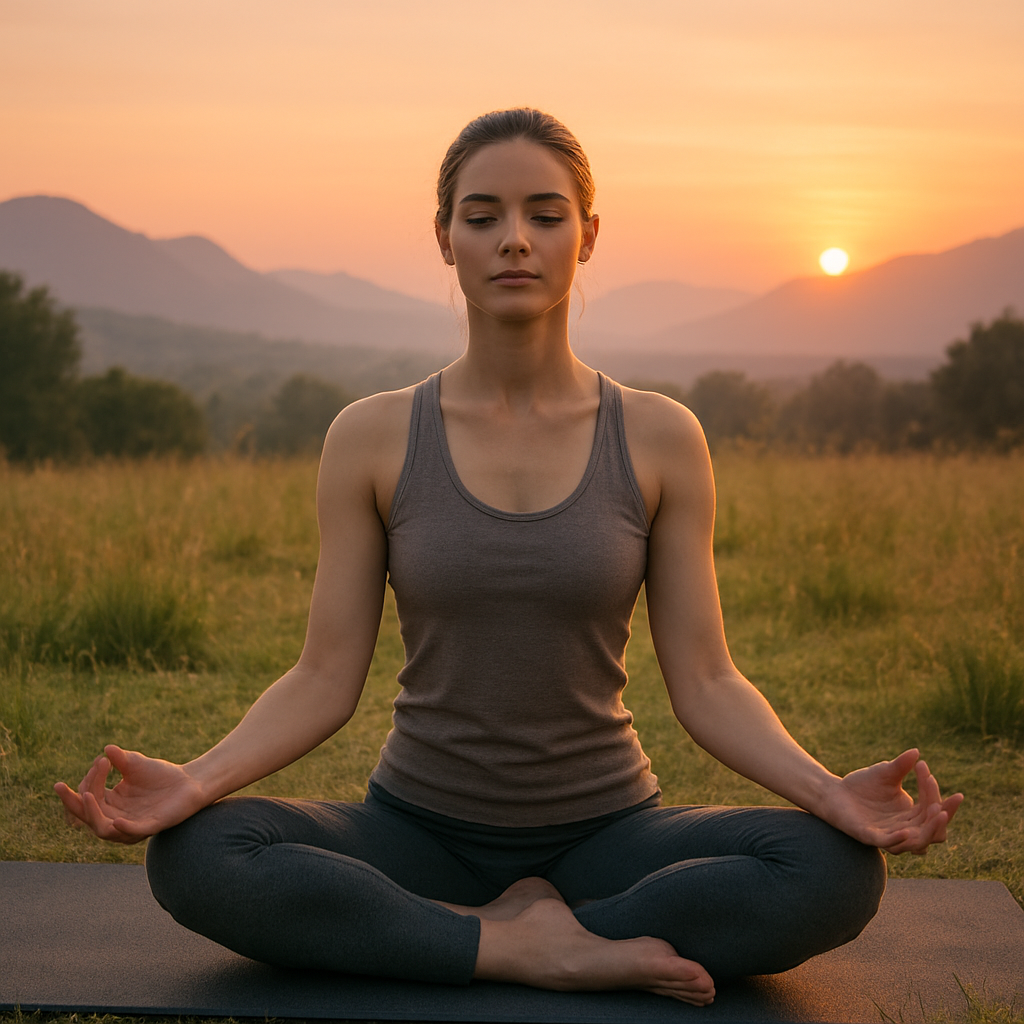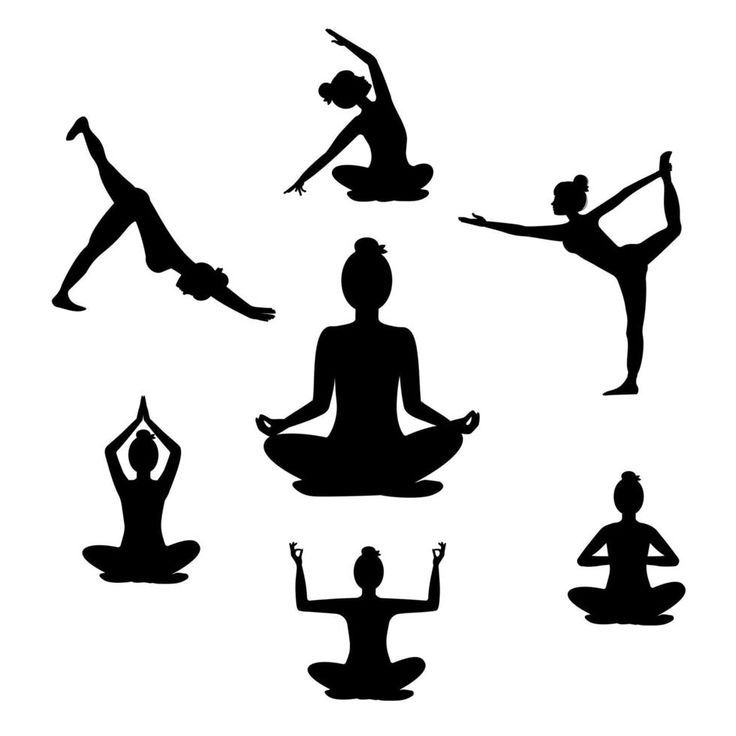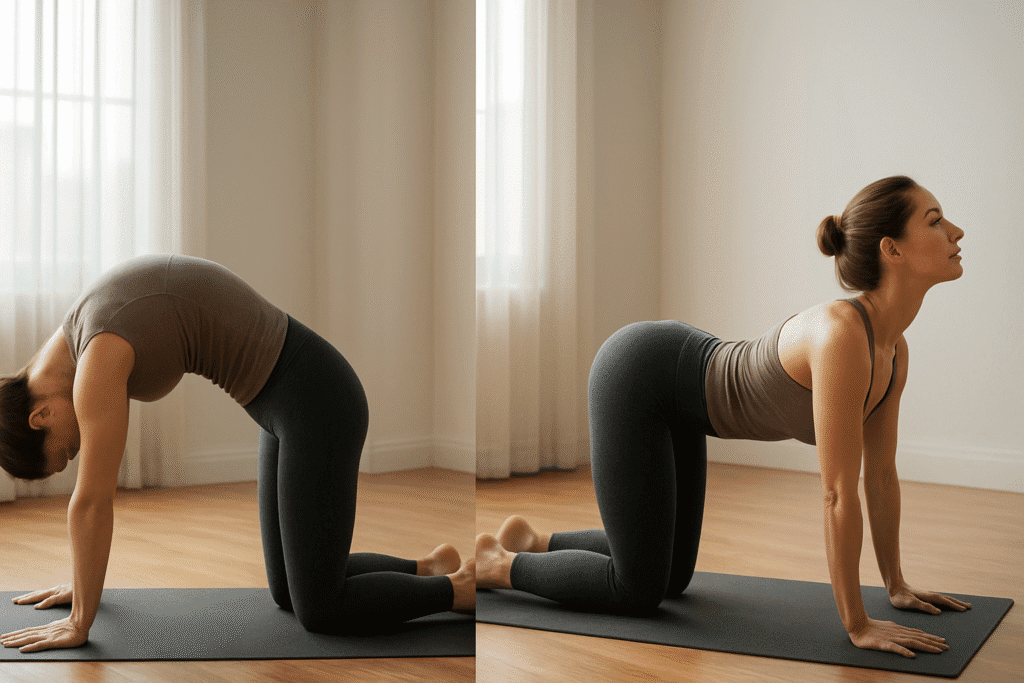In our hurried and sometimes hectic world we can easily count moments of peace and presence as a luxury. We are overwhelmed by information, demands and distractions are always left burnouts and lost. But what about having a practice that can not only shape your body but also relax your mind and create wholeness in your spirit? In comes yoga, no longer as an exercise procedure, but rather as a deep process of conscious motion and amazing therapeutic value.

Yoga is more than merely a set of stretches and poses, but it is, in its core, a moving meditation. It is linked to bringing your consciousness to the present moment and linked to your breath by making a decision to do so. It is this intentional coordination that the magic is found in, because instead of a generic workout, one gets an intense therapeutic experience.
The main principle of yoga power of healing is the possibility to harmonize the difference between our body and mind. We tend to spend much time in our heads with the past or the future in mind Yoga keeps us in touch with our bodies and this makes us have a strong sense of self-awareness.
Reduced stress and anxiety levels
Stress levels elevate the activity of sympathetic nervous system that triggers the fight or flight process. Such activities are yoga and particularly, such yoga where the deep diaphragmatic breathing (pranayama) induces the parasympathetic nervous system with corresponding relaxation and cortisol reduction. This easing can be a big help in relieving disorders of anxiety and chronic stress. Just picture it, you breathe out with every extended stretch, and you breathe in peace in with every deep breath, that is the power of therapeutic action.
Better Mood and Emotional Control
Frequent yoga practice has also demonstrated to enhance creation of neurotransmitters such as GABA and serotonin, that play an important role in mood control. The consciousness developed in the mat allows us to stay closer to our emotional strength as we learn to view our thoughts and emotions without having judgments and hence the increased sense of emotional flexibility. This translates to less emotional rollercoaster and less of an upheaval of the inner world.
Better Sleep
Yoga can be an eye-opener to most victims of insomnia and spacing nights. Serenity in the nervous system and easing of physical tensions makes it perfect condition to sleep comfortably. Yoga flows in the evening can indeed become a strong ritual to send the message to the body and mind that it is time to relax.
Conscious Movement Treatment as a Physical Healing
Although the mental advantages are enormous, the physical therapeutic grounds of yoga are additionally striking and in most cases interrelated.
Pain management and Flexibility
Be it a regular back pain, tight joints or a tense headache, yoga has got the mild but effective method of pain management. Poses will help to stretch the muscles, increase the range of motion of joints and improve the strength of supporting tissues that will take over the load of nerve and reduce a swelling. The mindful technique implies that you are listening to your body, acting to the best of your abilities, and you are slowly working on your increased range of motion without excessive pressure.
Better Posture and Balance
These days, bad posture has become common, with desk workers and smartphone hunch postures becoming the norm. The spine is made longer with yoga, muscles of core become stronger, and people become aware of their alignment, which helps to fix postural imbalances. Improved balance will reduce the risk of falling as well as an experience of being physically balanced and confident in the daily life.
Enhanced Circulation and Immune System
The physical yoga exercise will aid in stimulation of lymphatic systems that have the enormous role of detoxification and immunity. Enhanced flow of blood dehydrates oxygen in the cells and bodies which makes a person healthier and energetic.
Types and Yoga Poses to a Healthier Mind and Body
Below is a breakdown of the most common types of yoga, recommended poses, how to do them, and how much time to spend on each.

1. Hatha Yoga
Best For: Beginners, stress relief, and flexibility
Style: Slow-paced, focuses on posture and breathing
Key Poses and Instructions:
- Mountain Pose (Tadasana)
How to Do: Stand tall, feet together, arms by your side, shoulders relaxed. Distribute weight evenly on both feet.
Time Required: Hold for 30 seconds to 1 minute.
Benefits: Improves posture, grounding, and body awareness. - Tree Pose (Vrikshasana)
How to Do: Stand tall, lift one foot, place it on the opposite inner thigh or calf (avoid the knee), hands in prayer or overhead.
Time Required: Hold for 30 seconds per leg.
Benefits: Enhances balance, focus, and mental stability. - Cobra Pose (Bhujangasana)
How to Do: Lie on your stomach, place palms under shoulders, gently lift your chest while keeping elbows close.
Time Required: Hold for 15–30 seconds.
Benefits: Strengthens spine, relieves stress, opens chest.
2. Vinyasa Yoga
Best For: Weight loss, strength, and cardio
Style: Flowing sequence linked to breath
Key Poses and Instructions:
- Sun Salutation (Surya Namaskar)
How to Do: A flowing sequence including poses like forward fold, plank, cobra, and downward dog.
Time Required: 1 round = 1–2 minutes; repeat 5–10 rounds.
Benefits: Full-body workout, improves blood circulation and focus. - Warrior II (Virabhadrasana II)
How to Do: Stand with legs wide, bend front knee, extend arms parallel to floor. Gaze over front hand.
Time Required: Hold for 30–60 seconds each side.
Benefits: Builds endurance, stability, and self-confidence. - Plank Pose
How to Do: Hands under shoulders, body in a straight line from head to heels.
Time Required: Hold for 30 seconds to 1 minute.
Benefits: Strengthens core, shoulders, and arms.
3. Ashtanga Yoga
Best For: Experienced practitioners, building strength
Style: Structured and physically demanding
Key Poses and Instructions:
- Downward-Facing Dog (Adho Mukha Svanasana)
How to Do: From hands and knees, lift hips to form an inverted V-shape. Keep heels reaching toward the floor.
Time Required: Hold for 1 minute.
Benefits: Stretches entire body, calms the mind. - Triangle Pose (Trikonasana)
How to Do: Stand wide, turn one foot out, extend arms and reach to the foot, forming a triangle.
Time Required: Hold for 30 seconds each side.
Benefits: Improves digestion, balance, and mental clarity. - Seated Forward Bend (Paschimottanasana)
How to Do: Sit with legs extended, hinge at the hips, reach toward feet.
Time Required: Hold for 1–2 minutes.
Benefits: Calms the nervous system, stretches spine and hamstrings.
4. Yin Yoga
Best For: Deep relaxation, joint health
Style: Passive poses held for long periods
Key Poses and Instructions:
- Butterfly Pose
How to Do: Sit, bring soles of feet together, let knees fall open.
Time Required: Hold for 3–5 minutes.
Benefits: Opens hips and releases emotional tension. - Dragon Pose
How to Do: From a low lunge, lower the back knee and sink hips forward.
Time Required: Hold for 3–5 minutes each side.
Benefits: Deep hip and groin stretch; releases stored tension. - Sphinx Pose
How to Do: Lie on stomach, prop upper body on forearms, elbows under shoulders.
Time Required: Hold for 3–4 minutes.
Benefits: Gently opens lower back and chest.
5. Restorative Yoga
Best For: Stress relief, recovery, and healing
Style: Fully supported poses using props
Key Poses and Instructions:
- Legs-Up-the-Wall (Viparita Karani)
How to Do: Lie on your back, extend legs vertically up a wall, arms relaxed by your sides.
Time Required: Hold for 5–10 minutes.
Benefits: Improves circulation, relieves fatigue and anxiety. - Supported Child’s Pose
How to Do: Kneel and fold forward over a bolster or pillow. Arms extended or alongside body.
Time Required: Hold for 3–7 minutes.
Benefits: Calms the mind, relieves tension in the back. - Reclining Bound Angle Pose
How to Do: Lie on back, bring soles of feet together, knees open. Support knees with cushions.
Time Required: Hold for 5–10 minutes.
Benefits: Opens hips, reduces stress, and soothes the nervous system.
6. Kundalini Yoga
Best For: Mental clarity, spiritual energy
Style: Combines movement, chanting, breathwork, and meditation
Key Poses and Instructions:
- Spinal Flexes
How to Do: Sit cross-legged, hold shins, flex spine forward and backward.
Time Required: 1–3 minutes.
Benefits: Energizes spine, awakens internal energy. - Ego Eradicator
How to Do: Sit with arms at 60° angle, fingers tucked, thumbs pointing up. Use Breath of Fire.
Time Required: 1–3 minutes.
Benefits: Clears negative thoughts, boosts lung capacity. - Sat Kriya
How to Do: Sit on heels, arms straight overhead, fingers interlaced, chant “Sat” (pull navel in), “Nam” (release).
Time Required: 3–11 minutes.
Benefits: Balances energy, strengthens nervous system.
Particular Mind and Body Poses Benefits
Childs pose (Balasana)
This seated relaxed position is very calming. It assists in calming the mind, getting over fatigues and stress and stretching the lower back and hips. It is a great posture to use in grounding and soul searching.
Downward-Facing Dog (Adho Mukha Svanasana)
Downward Dog is a basic posture in which the whole body is stretched and arms and legs strengthened and the brain is relaxed due to which stress and light depression can be alleviated. It is also known to benefit digestion as well as makes the body fresh.
Tree Pose (Vrksasana)
It is an excellent balancing pose which can be utilized to enhance focus and concentration. It also produces the sense of stability and stillness, which is most often in body and mind, and slows down the nervous system.
Corpse Pose (Savasana)
This is the type of pose that is normally considered to be the most important one as it is the one that is utilized at the conclusion of a feature. It helps the entity and the mind to bring on board the benefits of the practice making one relax (at a deeper level), calm down the anxiety and sleep better. It is a workable avenue of reducing stress and attention
Cat-Cow Pose (Marjaryasana-Bitilasana)
As a pose, the warming-up action of the spine (increasing flexibility and coordination with in and out breathing of the body) may be called Cat-Cow Pose (Marjaryasana-Bitilasana). It is a gentle method of healing back muscles and also relaxing the mind, which promotes fluidity and the capacity to be in the present.

Standing Forward Bend (Uttanasana)
It is a deep stretch which relaxes the nervous system; revitalises tiredness and mild depression; rejuvenates the liver and the kidneys.
Legs-Up-the-Wall Pose (Viparita Karani)
It is a supportive inversion pose that will boosts circulation and calm the body, such as anxiety by exciting the parasympathetic nervous system.
This kind back bend expands the heart and chest, strengthens the back and thighs, helps to enhance blood circulation and relaxes the brain, which can be done both to conserve and relieve.
Researches in Pakistan
Although the positive effects of yoga are currently not limited to only one country, Pakistan-based research also emphasizes the almost medicinal properties of yoga in this place. The studies identify the role of mindful movement in promoting well-being in the Pakistani population.
Mental Health Outcomes
In a pilot study in which than 10-week yoga intervention was assessed on medical students in Pakistan, significant changes were observed in stress, anxiety, and depression. Other participants said that their overall quality of life, their sleep quality, and their ability to manage their emotions have significantly improved following the intervention. This implies that yoga may be an effective intervention in dealing with excess levels of academic stress that students in the area have to endure. Additional literature reviews on Pakistan also mention the possible application of yoga in the reduction of stress, anxiety, depression, and even PTSD in warfare torn regions that may be lacking conventional interventions in terms of mental health rehabilitation.
Blood Pressure:
A study Published in Pakistan journal of Medical Science in 2025 showed that yoga improved blood pressure in hypertensive women in 12 weeks. It was a randomized controlled trial that showed the effectiveness of yoga in blood pressure control, and it can therefore be used as an alternative treatment to hypertension in Pakistan
General Physical and Mental Well-being
General descriptions of the highlights of yoga that would also be true about the population of Pakistan indicate that yoga has a beneficial effect on overall fitness including the balance, body relaxing, and body strengthening capabilities of the body. It is also characterized by its capabilities of preventing diseases, pain (such as chronic back pain and headaches among others), and enhancement of gastrointestinal functionalities. All these advantages can be explained by the holistic nature of yoga that concerns not only physical movements but also breathing exercises
They all add to the evidence toward the inclusion of yoga into their health and wellness programs in Pakistan. They demonstrate how yoga can respond to the current issues of health, such as mental tension or cardiovascular problems, which are capable of a mind-body health initiative.
The Mat Mindfulness Movement in Life
What is really great about the medical value of yoga is that it goes so much further than just those yoga mats. The mindfulness that you are developing in your practice will start seeping in all other areas of your life.
Increased Presence
You would end up presence oriented during discussions and communication, being more focused on the environment and concerned with daily affairs.
Less Reactivity
Being able to see through your thoughts and emotions on the mat also means that you have increased the likelihood of responding rather than react to difficult stimuli.
Self-Compassion
Yoga embraces a friendly treatment with oneself, self-acceptance and treating yourself kindly; the secrets of successful mental life.
Therapeutic yoga
How to start your practice In case you are thinking of trying out the therapeutic merits of yoga, then the following are some of the tips:
Start Slow and Listen to Your Body
You do not need to complicate yourself in to difficult poses immediately. Pay attention to light movements and correct position.
Learn with a Certified Teacher
The right teacher will be able to take you through the poses safely and with foundations to alter them and adapt to personal preferences as well as preexisting medical conditions.
Try New Styles
Yoga ranges from soothing Hatha to healing Yin, so there should be a type to fit you. Test what works with you.
Therapy Dose
Tiny practices have an important effect, especially when done frequently. Consistency should be the goal rather than intensity.
Conclusion
Where the world constantly efforts us to the outside, yoga presents its own strong appeal to go inward. With mindful movement, it opens a space of healing, growth and self discovery and it shows that wellness is not only finding the power in our bodies, it is the ability to quiet the wisdom of our minds, and hear the open kindness in our hearts. Take a personal move into mindful movement, and open a vast therapeutic potential of yoga.

 Medically reviewed by
Medically reviewed by